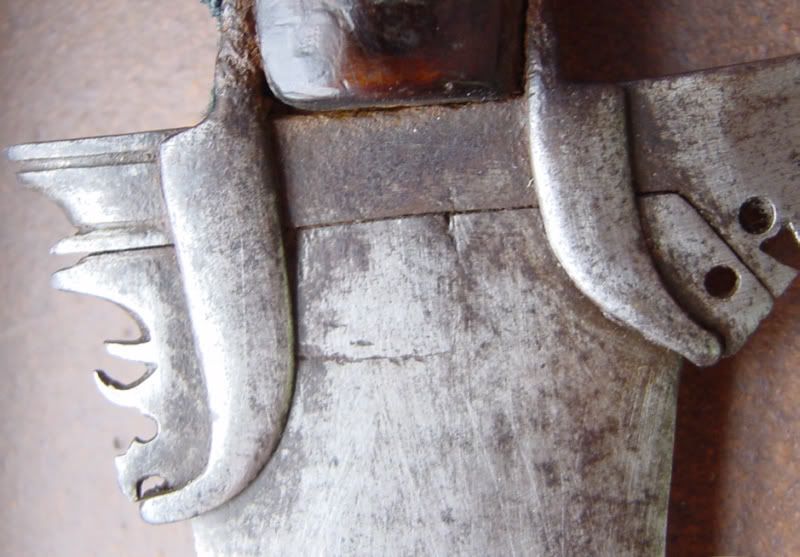I am just thinking aloud here. This thread is heating up which is nice. We are just collectors rather than qualified academics. However we have just the same ability to question and advance our understanding of the present ideas, we can pool so many examples?
This is the only Moro Keris I have but it displays the feature in discussion so well. I am not a blade smith but I would like to suggest that in this example the feature is not a repair or a replacement but all part of the original construction. I can only think by the size of the handle that the tang is short around 3-4 inches. It is also off set not following the centre line of the blade, this helps the weight forward feel in the hand. The short tang is aided by the clamps?
There are two parts to the blade, the blade and the base part. These elements are machted to each other in a very precise manner. I would like to suggest that all three parts blade, base and tang are assembled at the same time. First the blade and base are made to fit and as especially as the tang is off set it is forge welded in place so to accomadate the base element.
I make this only as a suggestion but I do question why every oddity has to be a replacement or a repair. A big question arises, do we see the tang feature in weapons without the seperate base element to the blade?????
I feel if you examine these pics it can be seen as three parts put together at the same time. Possibly this is a regional style? different smiths? possibly with some cultural meaning?


